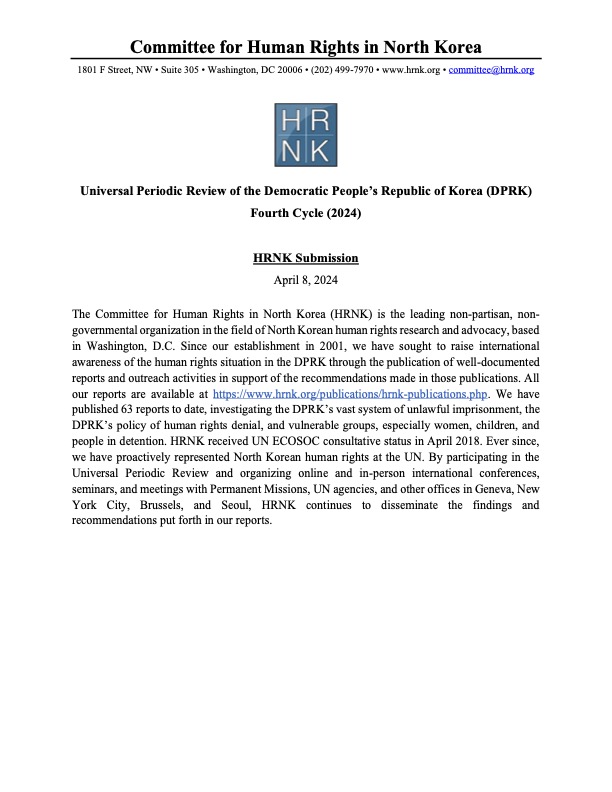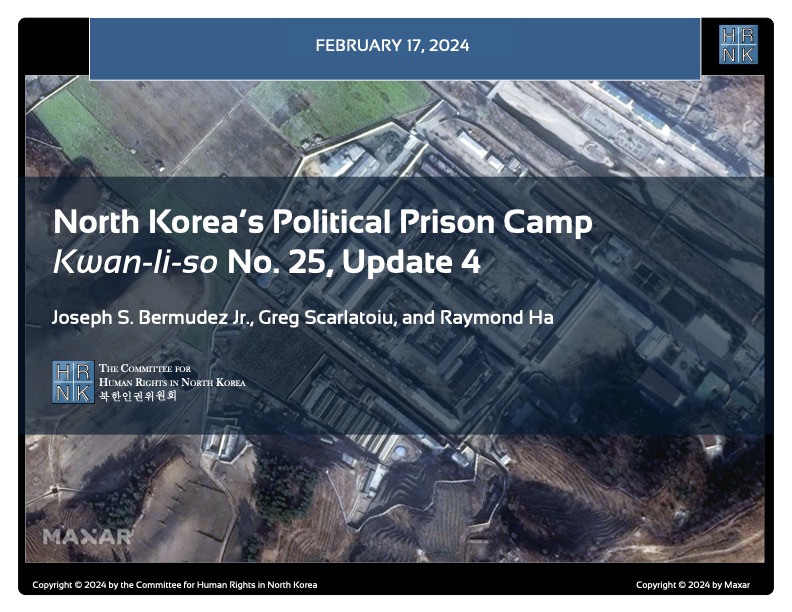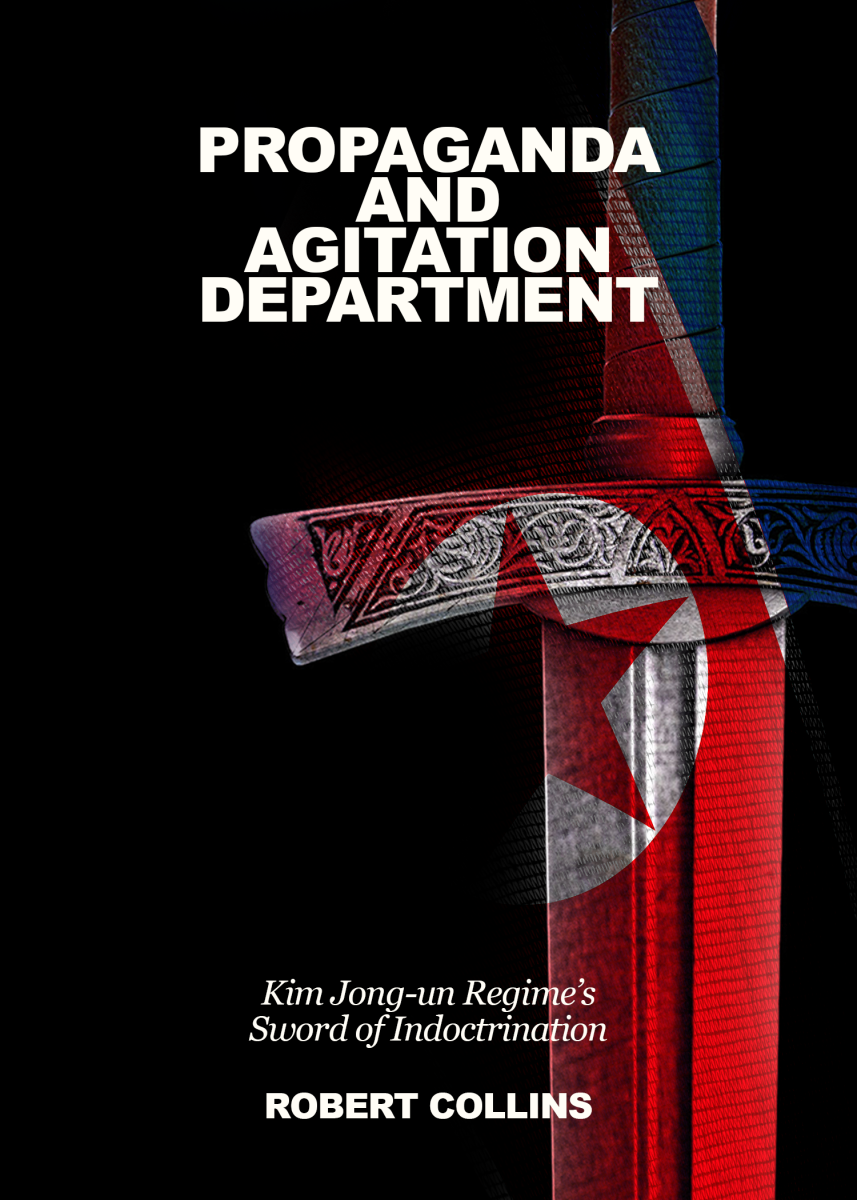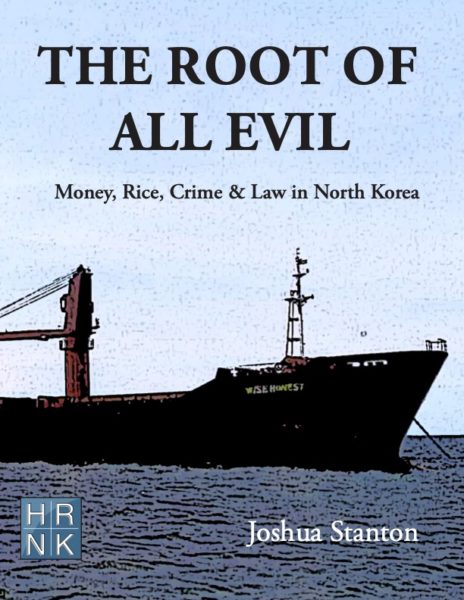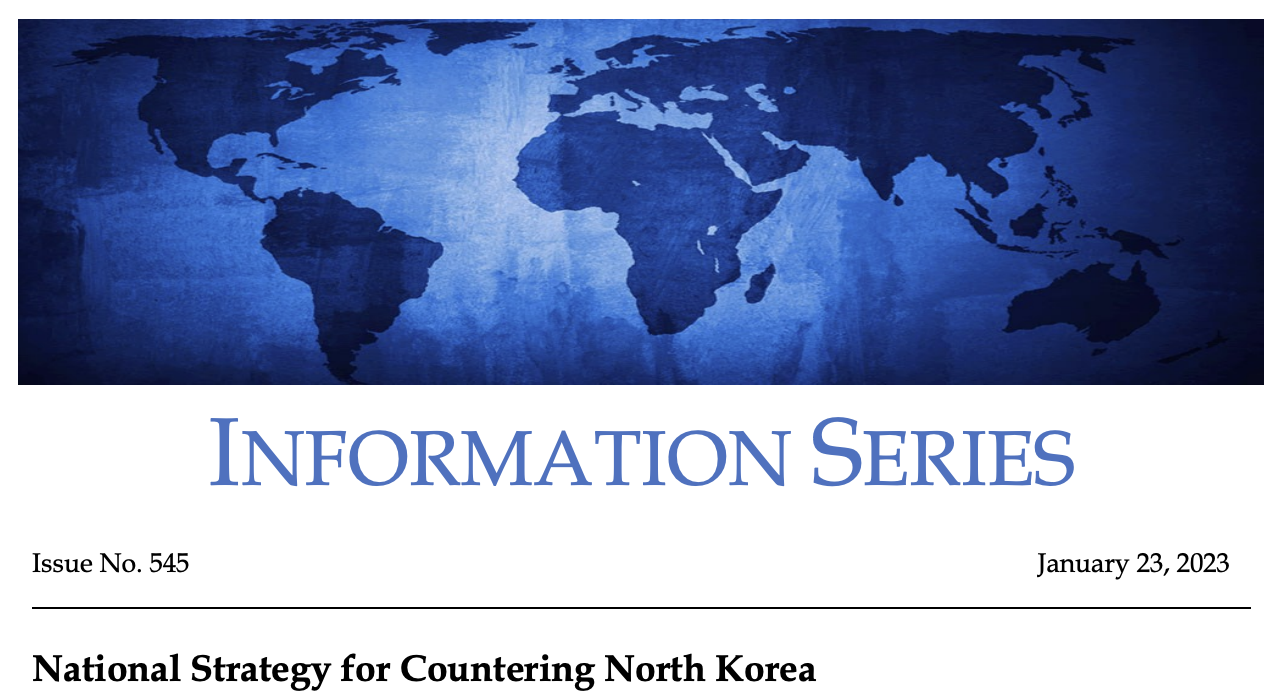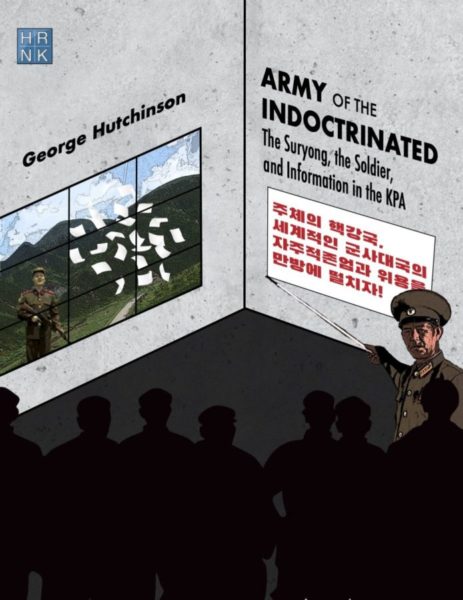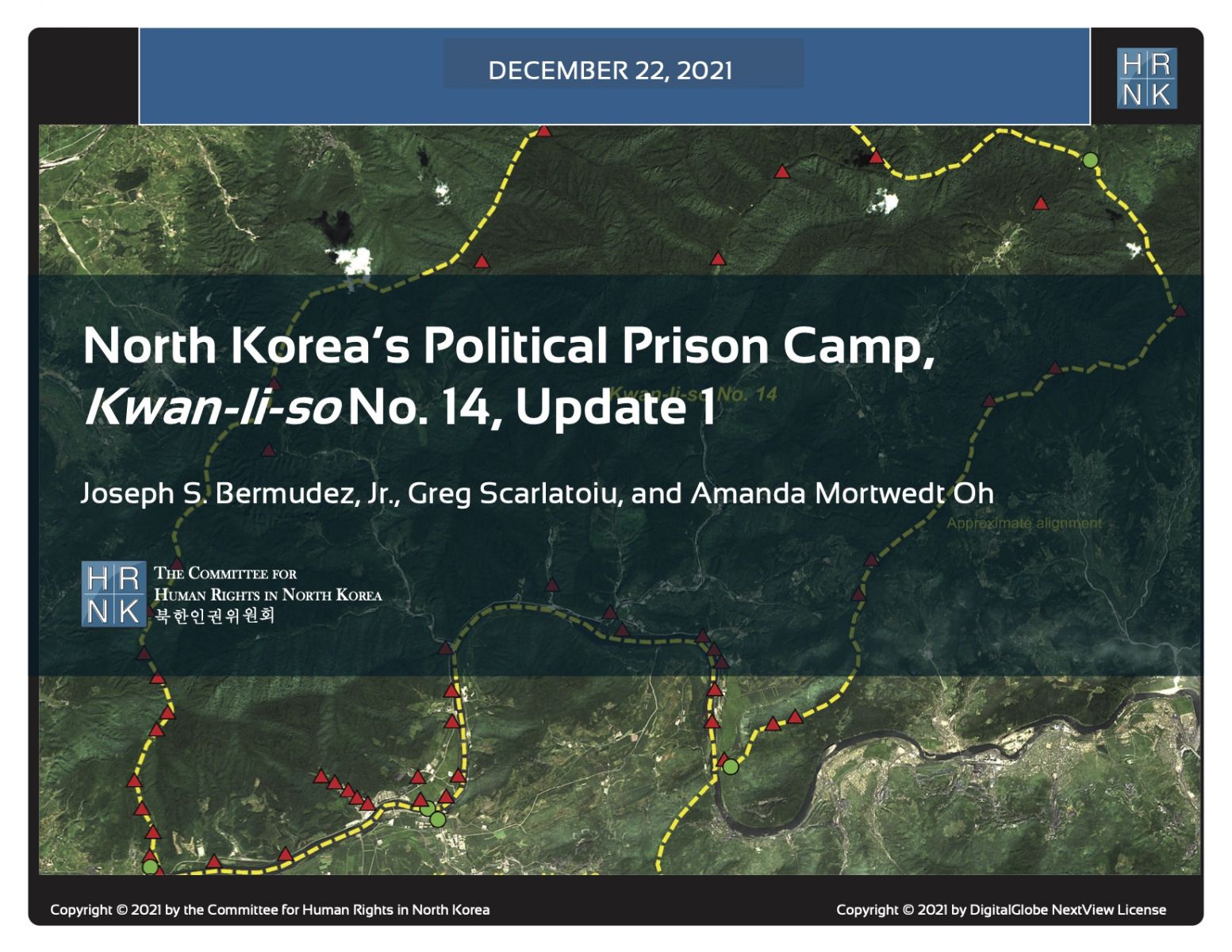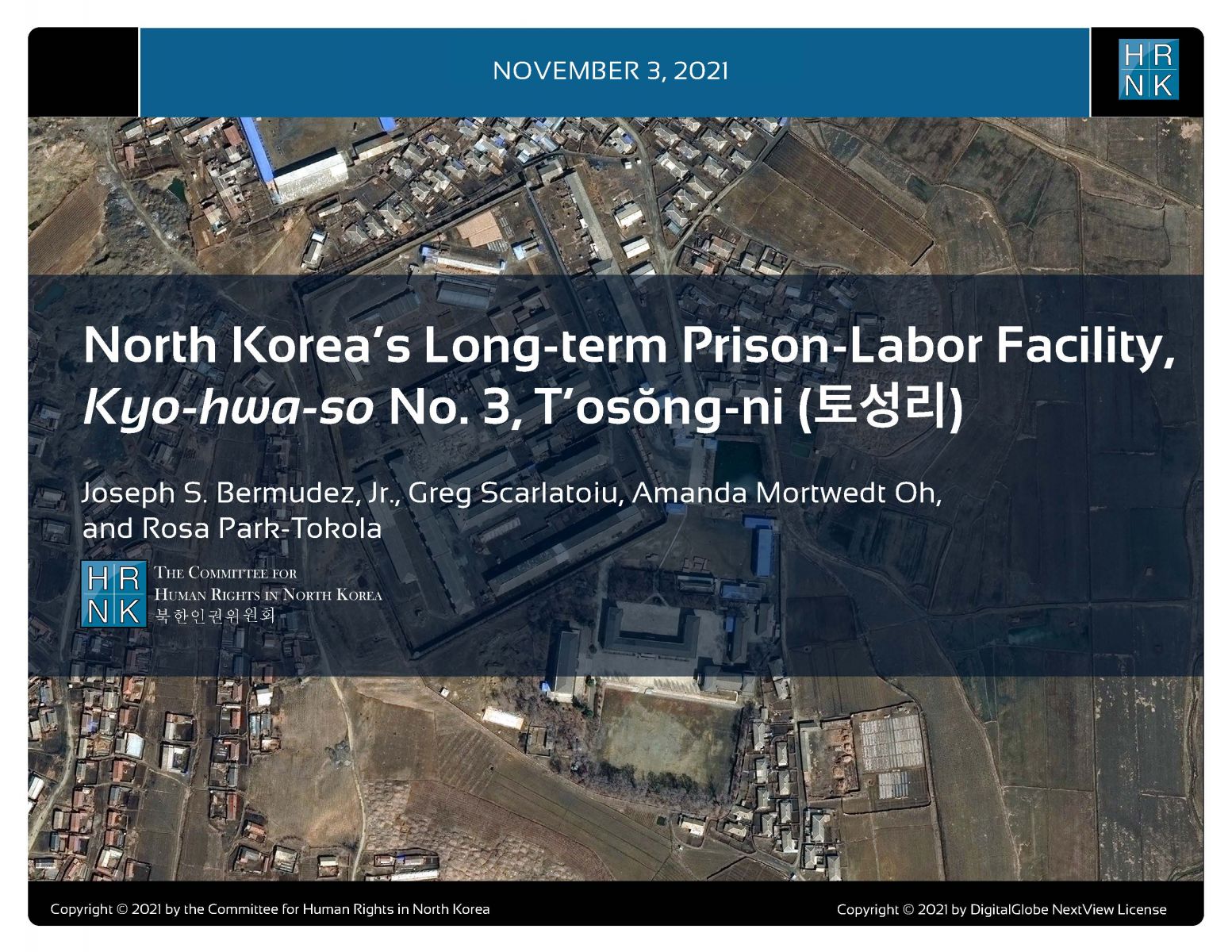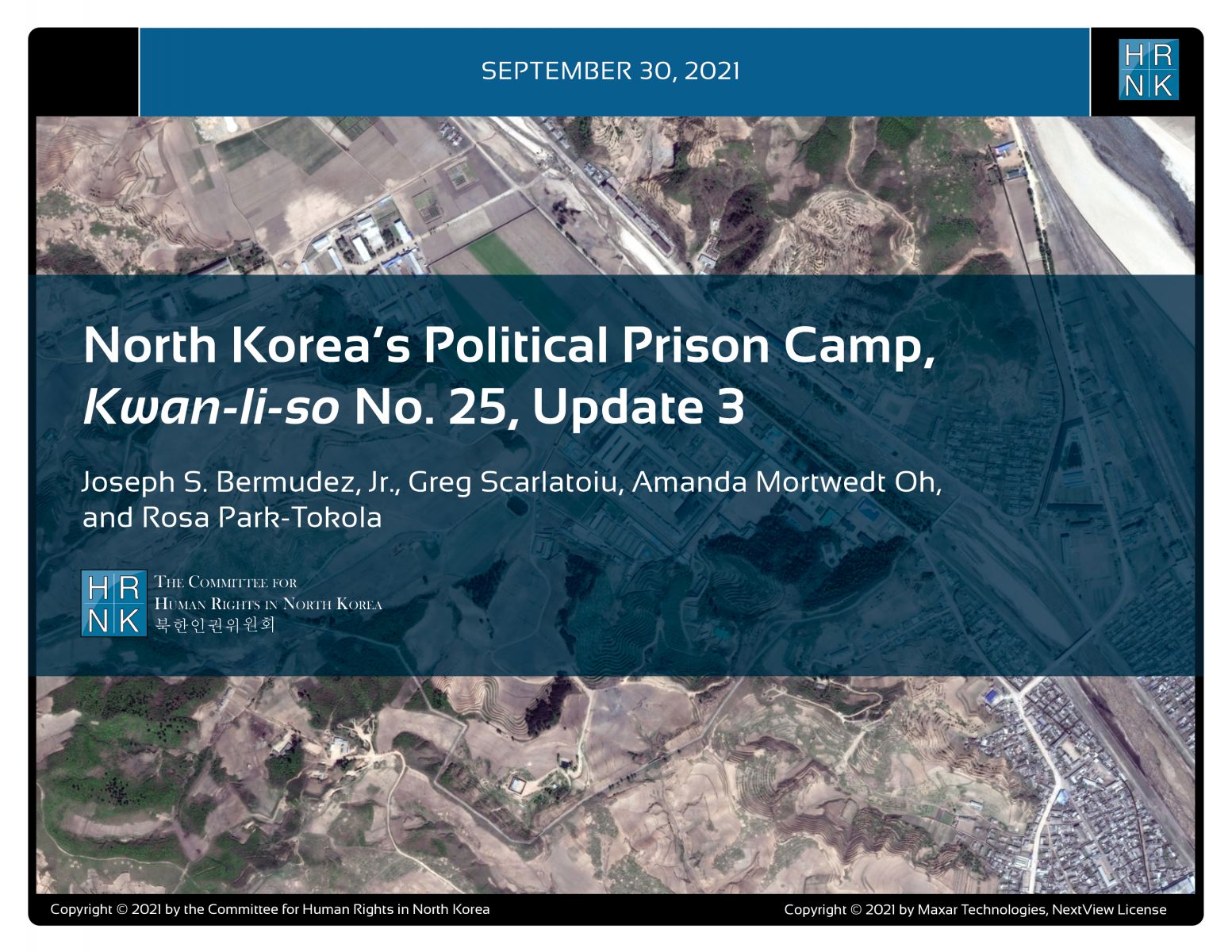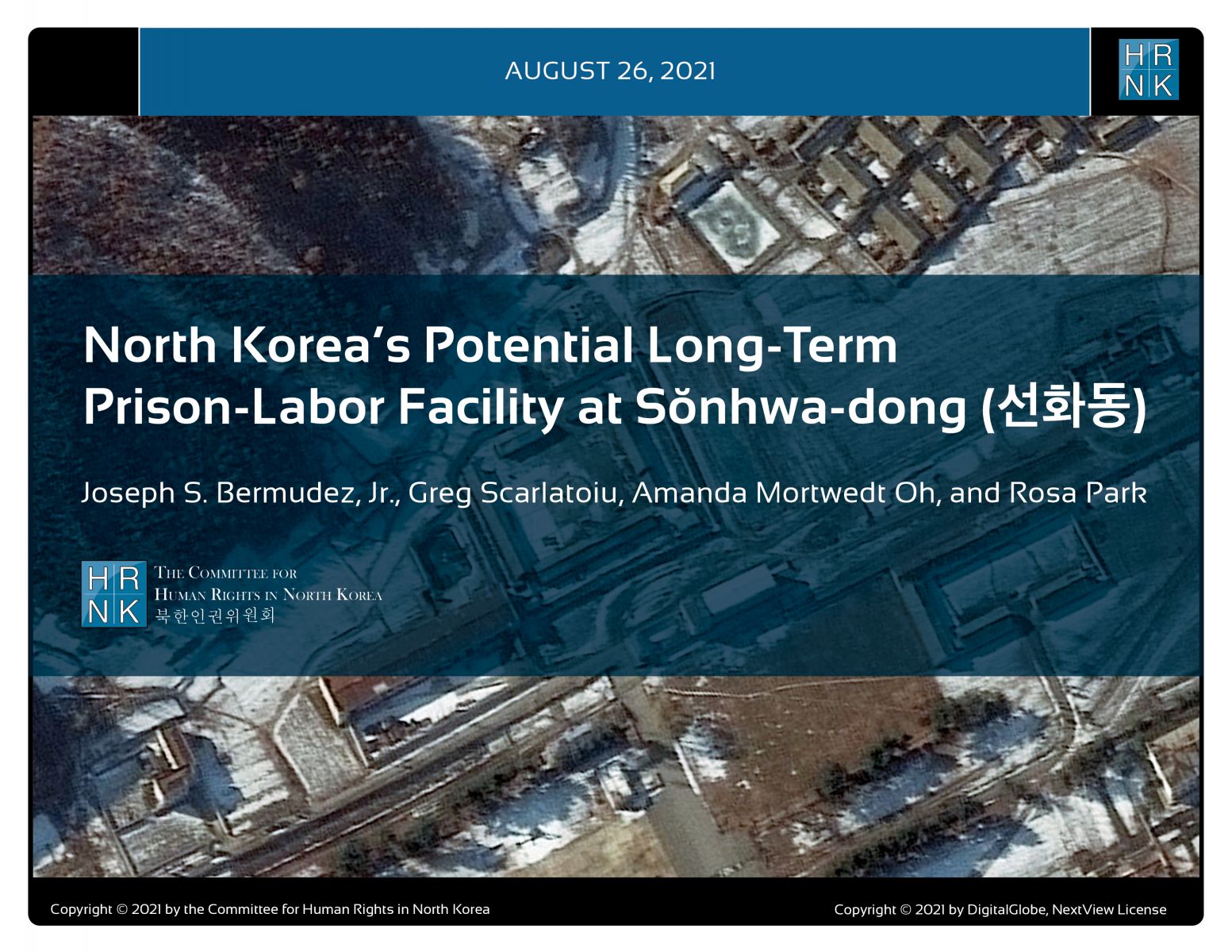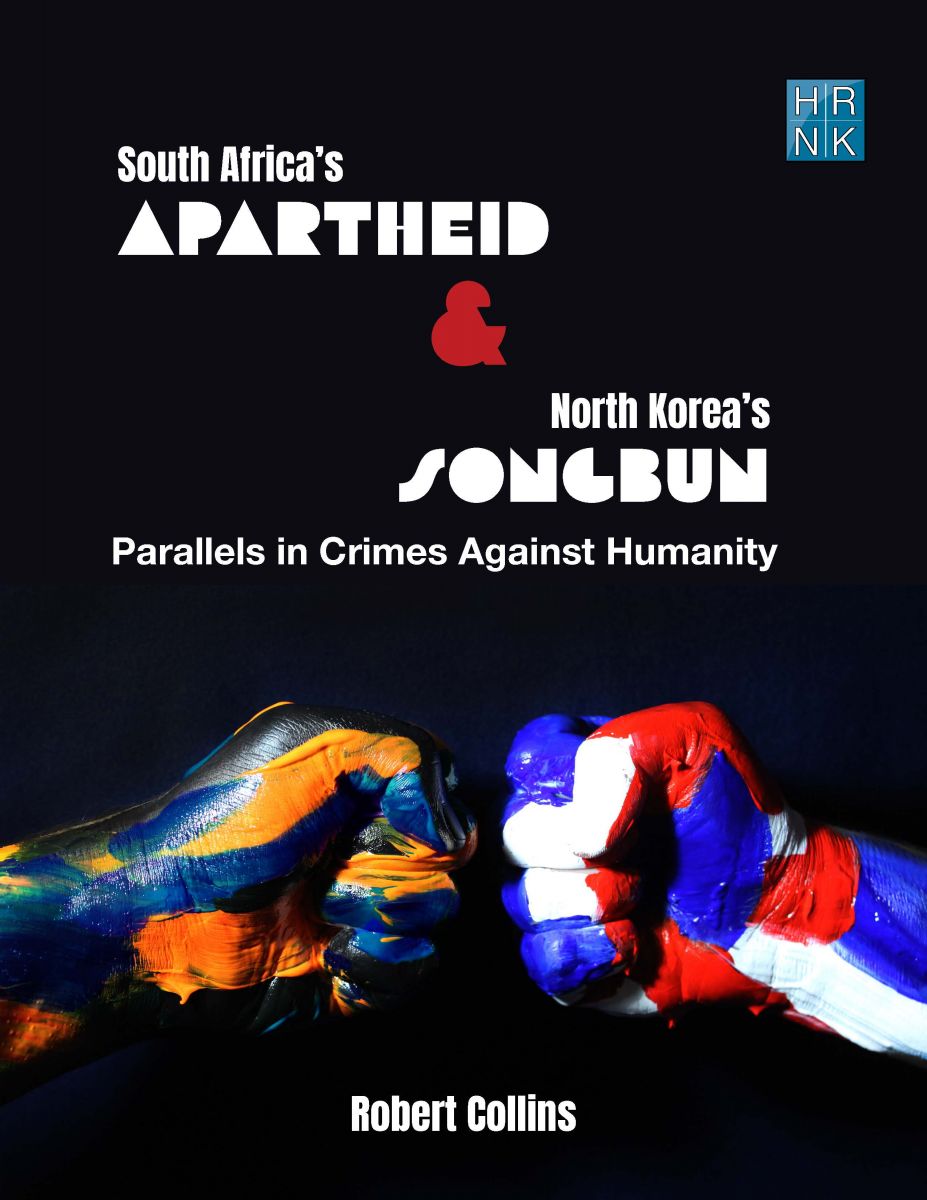PRESS RELEASE
Wednesday, September 30, 2020
The Committee for Human Rights in North Korea (HRNK) Launches Its Third Report Based on Satellite Imagery of North Korea’s Kyo-hwa-so No. 12, Jŏngŏ-ri – Update 3
Report confirms high death rate at the camp, presence of cremation facility operated to dispose of prisoners’ bodies. Report calls for the application of the Human Rights up Front Approach to UN and international NGO humanitarian interventions in North Korea, highlighting the importance of factoring in most vulnerable groups, including Kyo-hwa-so No. 12 prisoners. Report urges North Korea to abide by the Nelson Mandela Rules and the Bangkok Rules concerning the treatment of prisoners.
The Committee for Human Rights in North Korea (HRNK), a non-governmental organization based in Washington, D.C., has launched a report entitled North Korea: Imagery Analysis of Kyo-hwa-so No. 12, Jŏngŏ-ri - Update 3. The report methodology comprises satellite imagery analysis and former prisoner testimony. This kyo-hwa-so detention facility was first featured in the September 2015 report The Hidden Gulag IV: Gender Repression and Prisoner Disappearances by David Hawk. HRNK released two subsequent satellite imagery reports in 2016, including a September 16 rapid assessment of flood damage at the detention center, in the aftermath of Typhoon Lionrock.
Unlike the kwan-li-so political prison camps, the kyo-hwa-so re-education through labor prison camps also detain common offenders, who are given actual prison sentences, held together with those sentenced for essentially political offenses. One feature that the kwan-li-so and the kyo-hwa-so have in common is the extreme brutality against prisoners, as evidenced by the deplorable conditions and treatment in detention.
Run by the North Hamgyong Provincial Bureau, under the Prisons Bureau of the North Korean Ministry of People’s Security [reportedly now the Ministry of Social Security], Kyo-hwa-so No. 12 is located about 490 kilometers northeast of the capital city of Pyongyang, and approximately 25 km south of Hoeryong City. It consists of two primary facilities: a walled prison facility commonly known as “Kyo-hwa-so No. 12;” and a copper mine situated in a small branch valley a short distance south of the prison facility. The walled prison facility measures approximately 188 meters by 128 meters (205 yards by 139 yards), encompasses 2,360 hectares (28,230 square yards), and is encased by three-meter high walls, four elevated guard positions, and two exterior entrances.
Kyo-hwa-so No. 12 was established between 1980 and 1983 in an area known for orchards, beans, potatoes, and corn farming and logging. Satellite imagery analysis confirms witness testimony that the camp has added light industry and mining to the economic activities performed by prisoners. Satellite imagery also confirms witness testimony that an annex to the compound was built in February – August 2009 to deal with an increase in the number of female prisoners.
Kyo-hwa-so No. 12’s prison population estimates have ranged from 1,300 in the late 1990s to about 5,000 in recent years. According to witness accounts, about 60% of all prisoners (80% of women prisoners) are incarcerated for illegally crossing the border into China. The remaining 40% have been detained for offenses including watching South Korean soap operas, drug usage, and contact with Christian churches in the border regions.
HRNK Executive Director Greg Scarlatoiu pointed out: “According to witness testimony, the death rate at Kyo-hwa-so No. 12 appears to be high. Most fatalities are the result of injury, illness, or physical and mental abuse by prison officials.” HRNK Senior Satellite Imagery Analyst and principal report author Joseph S. Bermudez, Jr. emphasized that “an on-site crematory appears to operate to dispose of the bodies of prisoners in a surreptitious manner.”
A former prisoner provided HRNK with a gruesome account of the crematory operation: “Every Monday, we burned the corpses at Bul-mang Mountain. There’s a place that looked like a house, and we piled up the corpses in the round tank in it.”
According to Bermudez, "This imagery report takes us another step closer to understanding the cruel system of imprisonment in North Korea and highlights a real place where we know people are suffering beyond imagination. The atrocities committed throughout North Korea’s vast system of unlawful imprisonment, including Kyo-hwa-so No. 12, require the immediate attention of the international community."
HRNK Human Rights Attorney and report co-author Amanda Mortwedt Oh said: "One of the most powerful images that stuck with me after interviewing former prisoners of this camp is of prisoners drinking water or washing themselves with river water contaminated with ashes of deceased prisoners. The lack of human dignity afforded to prisoners is beyond repugnant, and the Kim regime must be held to account for such actions." Mortwedt Oh further stated: "Unveiling the location of the crematory at Kyo-hwa-so No. 12 means that we must continue to monitor the high rates of death in detention and push for accountability on behalf of many innocents and their families."
Report co-author Rosa Park stated that “HRNK is committed to continuing to monitor the kyo-hwa-so long-term prison labor facilities in North Korea because the Kim regime must be held accountable. With this update, the international community must recognize that the Kim regime continues to commit crimes against humanity by inhumanely imprisoning the North Korean people.”
The report calls for a closer inspection of North Korea’s supply chain, tainted by forced labor. Former prisoner testimony included in previous HRNK reports on this facility had already confirmed that false eyelashes have been produced with prison labor at Kyo-hwa-so No. 12. The report calls on UN agencies and international humanitarian NGOs present in the immediate vicinity of the camp to incorporate a Human Rights up Front approach to their delivery of humanitarian aid to North Koreans in need. As HRNK Executive Director Scarlatoiu said, “humanitarian assistance must reach the most vulnerable. Prisoners at Kyo-hwa-so No. 12, many of them political prisoners, represent a most vulnerable group. It is unacceptable that UN agencies and international NGOs would conduct humanitarian interventions in the area while completely ignoring the existence of a camp where the prison population is starved, exploited, and brutalized.”
Further, the report calls on North Korea to abide by the United Nations Standard Minimum Rules for the Treatment of Prisoners (the Nelson Mandela Rules) and the United Nations Rules for the Treatment of Female Prisoners and Non-custodial Measures for Women Offenders (the Bangkok Rules).
The report, North Korea: Imagery Analysis of Kyo-hwa-so No. 12, Jŏngŏ-ri – Update 3, is available on HRNK’s website: https://www.hrnk.org/uploads/pdfs/KHS12_FINAL.pdf.
Contact:
Greg Scarlatoiu, executive director
In this submission, HRNK focuses its attention on the following issues in the DPRK: The status of the system of detention facilities, where a multitude of human rights violations are ongoing. The post-COVID human security and human rights status of North Korean women, with particular attention to sexual and gender-based violence (SGBV). The issue of Japanese abductees and South Korean prisoners of war (POWs), abductees, and unjust detainees.
This report provides an abbreviated update to our previous reports on a long-term political prison commonly identified by former prisoners and researchers as Kwan-li-so No. 25 by providing details of activity observed during 2021–2023. This report was originally published on Tearline at https://www.tearline.mil/public_page/prison-camp-25.
This report explains how the Kim regime organizes and implements its policy of human rights denial using the Propaganda and Agitation Department (PAD) to preserve and strengthen its monolithic system of control. The report also provides detailed background on the history of the PAD, as well as a human terrain map that details present and past PAD leadership.
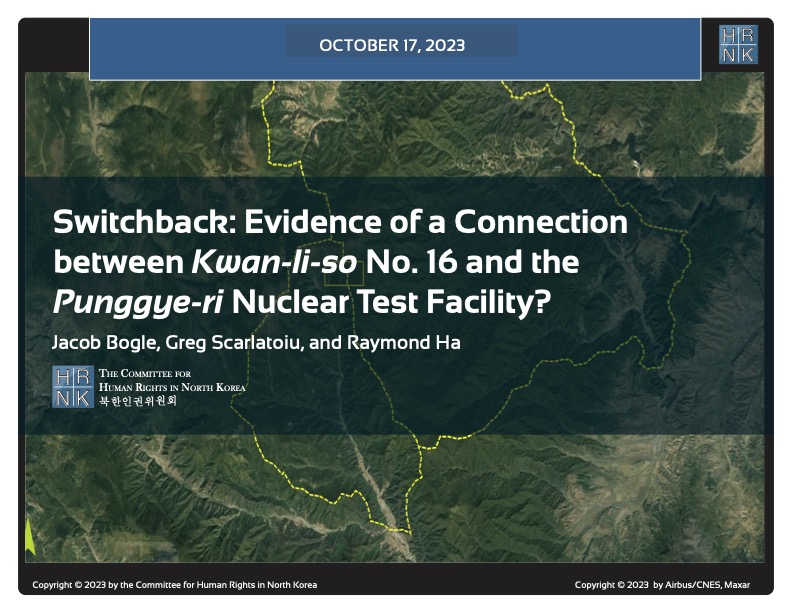
HRNK's latest satellite imagery report analyzes a 5.2 km-long switchback road, visible in commercial satellite imagery, that runs from Testing Tunnel No. 1 at North Korea's Punggye-ri nuclear test facility to the perimeter of Kwan-li-so (political prison camp) no. 16.
This report proposes a long-term, multilateral legal strategy, using existing United Nations resolutions and conventions, and U.S. statutes that are either codified or proposed in appended model legislation, to find, freeze, forfeit, and deposit the proceeds of the North Korean government's kleptocracy into international escrow. These funds would be available for limited, case-by-case disbursements to provide food and medical care for poor North Koreans, and--contingent upon Pyongyang's progress
For thirty years, U.S. North Korea policy have sacrificed human rights for the sake of addressing nuclear weapons. Both the North Korean nuclear and missile programs have thrived. Sidelining human rights to appease the North Korean regime is not the answer, but a fundamental flaw in U.S. policy. (Published by the National Institute for Public Policy)
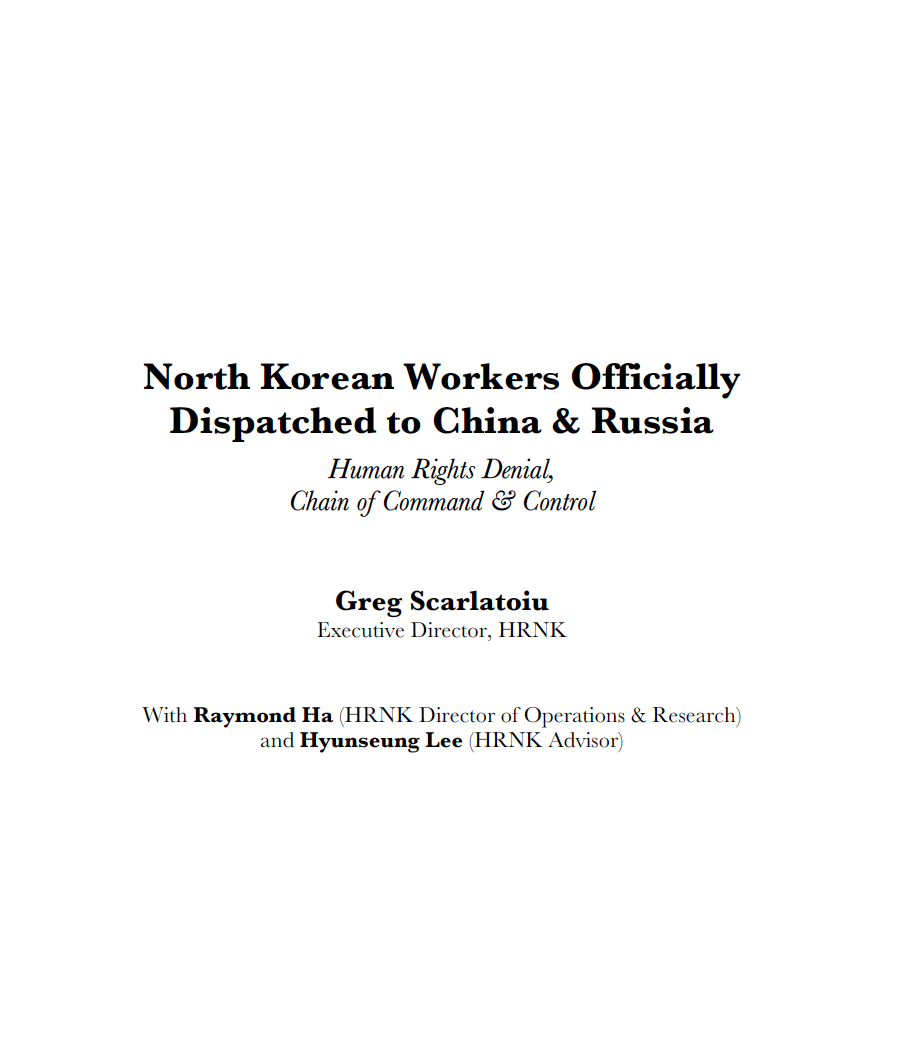
North Korea’s forced labor enterprise and its state sponsorship of human trafficking certainly continued until the onset of the COVID pandemic. HRNK has endeavored to determine if North Korean entities responsible for exporting workers to China and Russia continued their activities under COVID as well.
George Hutchinson's The Suryong, the Soldier, and Information in the KPA is the second of three building blocks of a multi-year HRNK project to examine North Korea's information environment. Hutchinson's thoroughly researched and sourced report addresses the circulation of information within the Korean People's Army (KPA). Understanding how KPA soldiers receive their information is needed to prepare information campaigns while taking into account all possible contingenc
This report is part of a comprehensive long-term project undertaken by HRNK to use satellite imagery and former prisoner interviews to shed light on human suffering in North Korea by monitoring activity at political prison facilities throughout the nation. This is the second HRNK satellite imagery report detailing activity observed during 2015 to 2021 at a prison facility commonly identified by former prisoners and researchers as “Kwan-li-so No. 14 Kaech’ŏn” (39.646810, 126.117058) and
This report is part of a comprehensive long-term project undertaken by HRNK to use satellite imagery and former prisoner interviews to shed light on human suffering in North Korea by monitoring activity at civil and political prison facilities throughout the nation. This study details activity observed during 1968–1977 and 2002–2021 at a prison facility commonly identified by former prisoners and researchers as "Kyo-hwa-so No. 3, T'osŏng-ni" and endeavors to e
This report is part of a comprehensive long-term project undertaken by HRNK to use satellite imagery and former detainee interviews to shed light on human suffering in the Democratic People’s Republic of Korea (DPRK, more commonly known as North Korea) by monitoring activity at political prison facilities throughout the nation. This report provides an abbreviated update to our previous reports on a long-term political prison commonly identified by former prisoners and researchers as Kwan-li-so
Through satellite imagery analysis and witness testimony, HRNK has identified a previously unknown potential kyo-hwa-so long-term prison-labor facility at Sŏnhwa-dong (선화동) P’ihyŏn-gun, P’yŏngan-bukto, North Korea. While this facility appears to be operational and well maintained, further imagery analysis and witness testimony collection will be necessary in order to irrefutably confirm that Sŏnhwa-dong is a kyo-hwa-so.
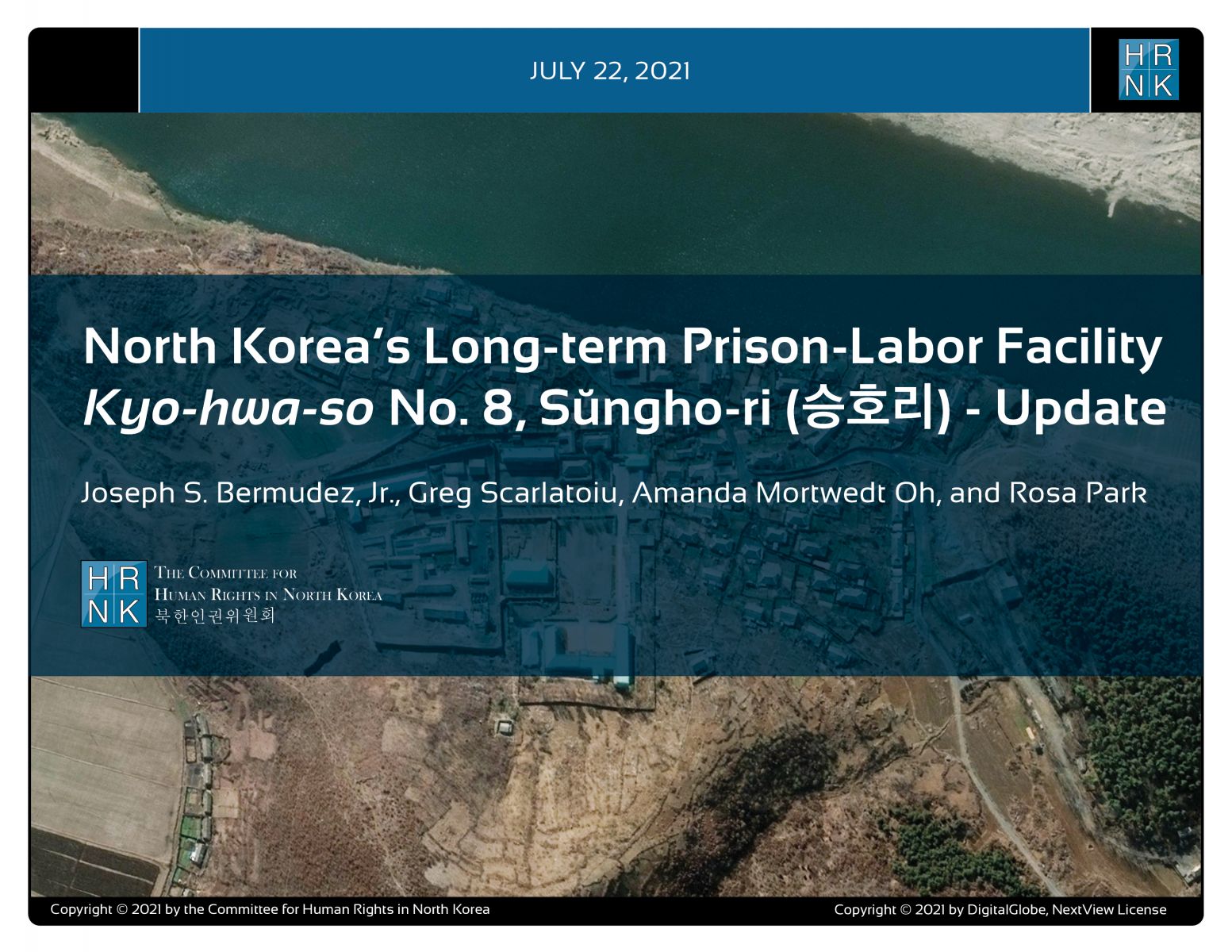
"North Korea’s Long-term Prison-Labor Facility Kyo-hwa-so No. 8, Sŭngho-ri (승호리) - Update" is the latest report under a long-term project employing satellite imagery analysis and former political prisoner testimony to shed light on human suffering in North Korea's prison camps.
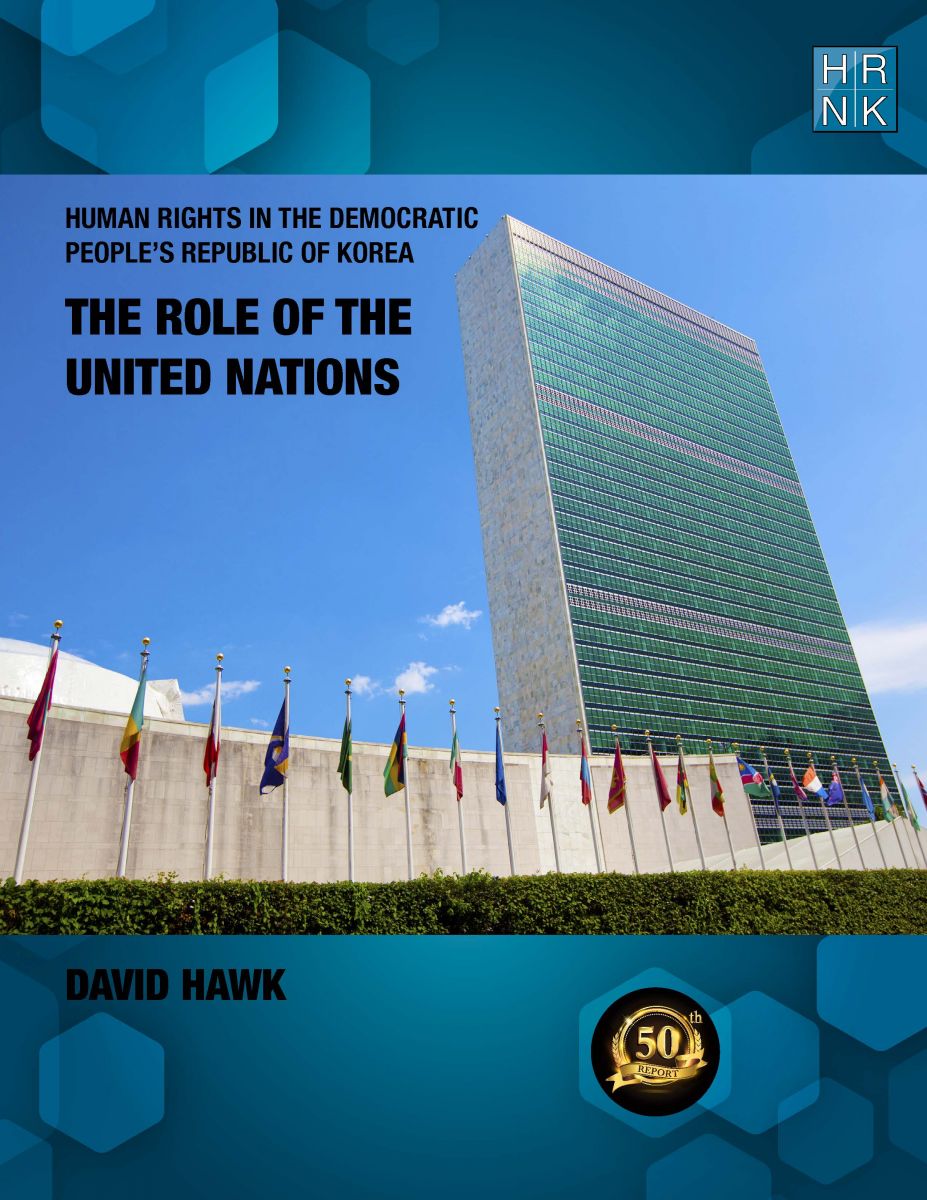
Human Rights in the Democratic Republic of Korea: The Role of the United Nations" is HRNK's 50th report in our 20-year history. This is even more meaningful as David Hawk's "Hidden Gulag" (2003) was the first report published by HRNK. In his latest report, Hawk details efforts by many UN member states and by the UN’s committees, projects and procedures to promote and protect human rights in the DPRK. The report highlights North Korea’s shifts in its approach
South Africa’s Apartheid and North Korea’s Songbun: Parallels in Crimes against Humanity by Robert Collins underlines similarities between two systematically, deliberately, and thoroughly discriminatory repressive systems. This project began with expert testimony Collins submitted as part of a joint investigation and documentation project scrutinizing human rights violations committed at North Korea’s short-term detention facilities, conducted by the Committee for Human Rights
